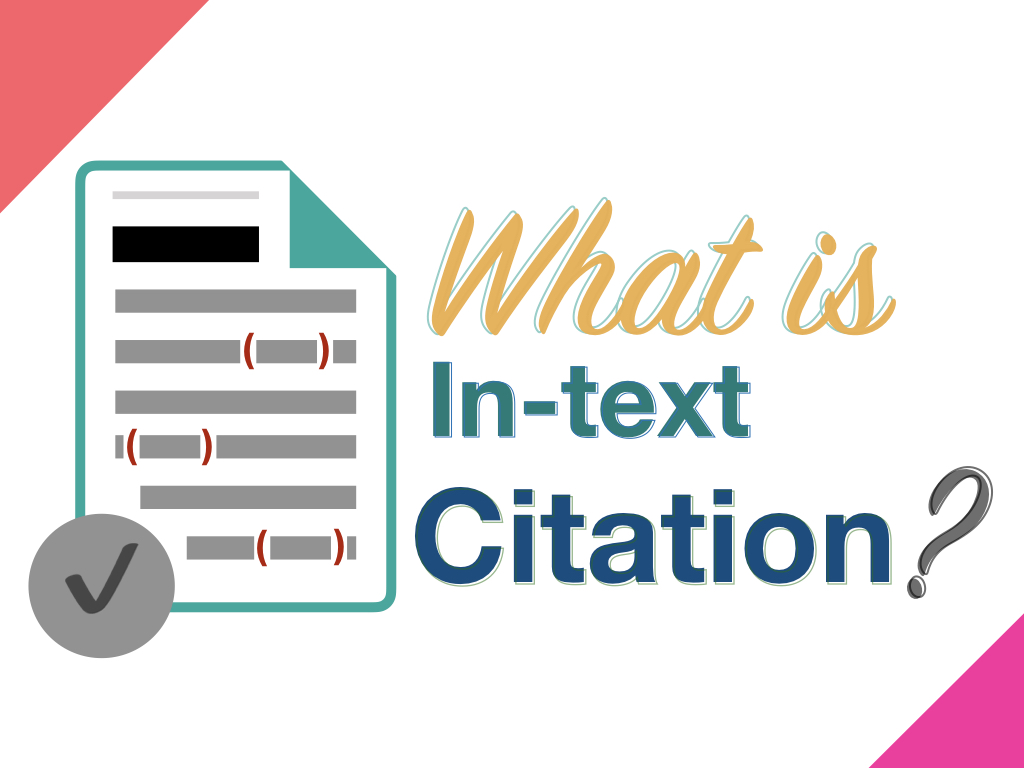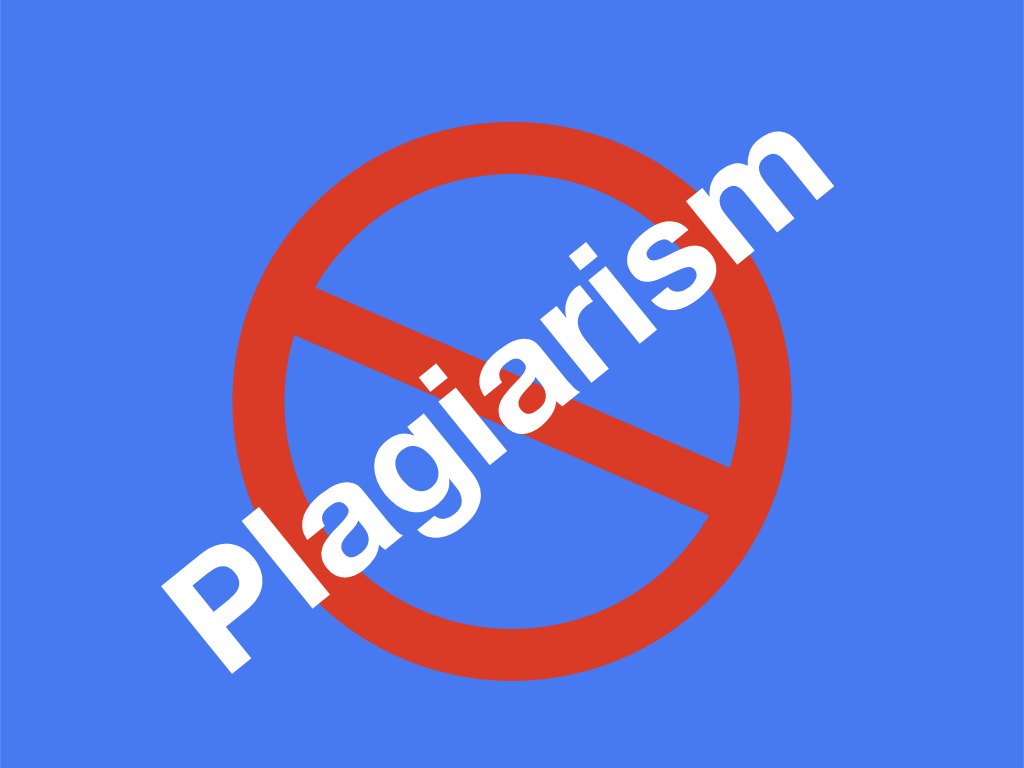“The in-text citation is a process to mention (briefly) a source from which you have extracted information and used in your article.”
Structure of the article:
- What is an in-text citation?
- Definition
- Importance
- Benefits
- What is APA in-text citation?
- Examples of APA in-text citation
- Single author APA in-text citation
- Two authors APA in-text citation
- Multiple author APA in-text citation
- Website APA in-text citation
- Examples of APA in-text citation
- What is MLA in-text citation?
- Examples of MLA in-text citation
- Single author MLA in-text citation
- Two authors MLA in-text citation
- Multiple author MLA in-text citation
- Website MLA in-text citation
- Examples of MLA in-text citation
The word “Citation” or “to cite” have a significant role in PhD writing such as proposal, thesis or article, even it is important for every type of writing too. To cite means to give credit to the original scientist or group of scientists.
A content without citation and referencing is considered plagiarised until it is original. What does it mean? A person has used someone’s intellectual property without his/ her prior permission- has been stolen.
That’s the reason scientific or academic writing has been structured in a manner that looks good, impressive, professional and most importantly un-plagiarised. We have covered a series of articles on plagiarism, you can read it here: How to avoid plagiarism?
Elaboratively, plagiarism means consuming or altering content in the form of text, para, image, statistic or anything that is not yours! The correct way is to mention them or the source of information, that is a citation, that’s it!
In the present article, I will explain to you the meaning of citation in layman, its importance and why to use it. In addition, I will have to explain two of the best and widely used citation methods APA (American Psychological Association) and MLA (Modern Language Association), their examples and how to use it in different content.
Note that there are many forms of citation and techniques, but here we will only discuss “in-text” citation, as it is widely used in academics and scientific writing.
What is an in-text citation?
Let’s understand it with two conditions, first.
Wonder you have discovered a way to prevent migrants- a common headache type, you have published an article on it in a peer-reviewed journal. Someone else is working on the same method in his/her PhD research lab, used your way or technique to prevent migrant pain without mentioning you, and presented it as his/or her own research. Is it legit? How do you feel?
In another condition, a person wants to conduct research on testing a novel drug to prevent migrant pain, text you to give permission to use your method or technique to test. On behalf, mention you in their research and publication as a primary source of information, now tell me how do you feel? Do you think is it legit?
The second condition is more satisfactory to you and legit also, the reason is, the prospective researcher wanting to give you credit for your outstanding findings.
That’s how things are done in the academic and scientific fraternity!
When you mention someone in in-text or sentence, you use it in order to give them fair credit is a citation. When you cite a sentence or article correctly with references, it’s become free of plagiarism.
Definition:
An in-text citation refers to quoting or paraphrasing a sentence, text, statistics or paragraph from where it has been extracted by mentioning the author, year and other information.
Read more: What is PhD?- History, Definition, Origin, Requirement, Fees, Duration and Process.
Importance:
As we explained, in-text is a methodology for academic and scientific writing, here are the reasons why is it important:
- Makes document plagiarism-free.
- Give credit to the original researcher, developer or scientist.
- Give fair credit as a useful resource for findings.
- Provides authenticity to the work or article.
- Readers can verify the information.
- Readers can properly navigate to the original scientist or article to gain more information.
- Readers can understand the importance and significance of the text or information in the article.
Note: In-text citation provides proper navigation to verify information.
How to do in-text citation?
In-text citation and referencing are interlinked whose correct synchronization leads readers to the correct place from where the information is collected. Here is the elaborative and widely accepted way how you can do it.
- First, read the article thoroughly from where you want the information to use in your article. Separate the portion, sentence, text, figures or statistics you want to ‘support your article’ (mark this, it is very important, we will discuss it later).
- Make your own sentence and use it in them, don’t copy or reproduce the whole paragraph or sentence. Although some text, definition or statistics can be used as it is!
- While using the information in the article at the end, mention it.
- In the bracket, mention the second name of the author and the year of publication. If there are two authors separate them with “&” along with the year of publication.
- Some publications or journals also need page numbers of paragraph numbers as well.
- Do a repeat for another source of information.
Here is an example, Eunuchs are suffering from either psychological, biological and genetic problems (Chauhan & Patel, 2020).
Thumb rule: Must include the name of the author, authors and the year of publication. However, the style may vary.
Which information should be cited in-text?
Now once you know the way to do it, you also need to know which content can be cited?
When you are writing a blog article or anything like that, probably in-text citation isn’t mandatory, still, content can’t be copied, reproduced partially or fully, Google will penalize.
The in-text citation is required for the following:
- Original research, research or thesis title or findings
- Statistics, facts and numbers used.
- Figures and images used.
- The idea of other researchers.
- Text of sentence of other material.
Universal information, definition and global facts aren’t cited usually.
Now here in the upcoming section of this article, we will understand two of the most common and renowned in-text citation methods that are APA- American Psychology Association style citation and MLA- Modern Language Association style citation.
Related article: Writing a Research Proposal for a PhD Degree.
What is APA in-text citation?
Scholarly and peer-reviewed journals worldwide use in-text citation methods proposed by APA- American Psychological Association as “Publication Manual for the American Psychological Association”.
APA is trusted and easy to use technique for citation and became active in 1923.
Examples of APA in-text citation:
As per the 7th edition of the APA, here are some of the examples of APA in-text citation. Here we have given an example only to let you know.
Now it is important to understand that to make the citation viable, references must be there at the end of the article. We will explain each format with reference.
Single author APA in-text citation:
Recent findings suggest that Eunuchs have various types of genetic abnormalities either gene or chromosome involved in development of eunuchism. Although other psychosocial and biological reasons may be involved as well (Chauhan, 2020).
You can also start sentence like Chauhan (2020) found that….(sentence)
Reference:
Chauhan, T. (2020). Genetic status of eunuch -an in depth review. Clinical Biotechnology and Microbiology, 2(5), 472-484.
Two author APA in-text citation:
Recent findings suggest that Eunuchs have various types of genetic abnormalities either gene or chromosome involved in development of eunuchism. Although other psychosocial and biological reasons may be involved as well (Chauhan & Patel, 2020).
Chauhan and Patel (2020) explained that….(sentence).
Reference:
Chauhan, T. & Patel, R. (2020). Genetic status of eunuch -an in-depth review. Clinical Biotechnology and Microbiology, 2(5), 472-484.
Multiple author APA in-text citation:
Recent findings suggest that Eunuchs have various types of genetic abnormalities either gene or chromosome involved in development of eunuchism. Although other psychosocial and biological reasons may be involved as well (Chauhan et al., 2020).
Chauhan et al. (2020) shown that…(sentence)
Reference:
Chauhan, T., Patel, R., Suther, J., & Patel, M. (2020). Genetic status of eunuch -an in-depth review. Clinical Biotechnology and Microbiology, 2(5), 472-484.
Or for more than 4 authors
Chauhan, T. & Patel, R. et. al., (2020). Genetic status of eunuch -an in-depth review. Clinical Biotechnology and Microbiology, 2(5), 472-484.
Website APA-style in-text citation:
Recent findings suggest that Eunuchs have various types of genetic abnormalities either gene or chromosome involved in the development of eunuchism. Although other psychosocial and biological reasons may be involved as well (ThePhDhub, 2020).
Reference:
Dr Chauhan T. (2020). Genetic status of eunuchs. https://thephdhub/name of the article/.
APA style citation and referencing:
| Information | Citation | Reference |
| Single author | (Chauhan, 2020) | Chauhan, T. (2020). Genetic status of eunuch -an in-depth review. Clinical Biotechnology and Microbiology, 2(5), 472-484. |
| Two authors | (Chauhan & Patel, 2020) | Chauhan, T. & Patel, R. (2020). Genetic status of eunuch -an in-depth review. Clinical Biotechnology and Microbiology, 2(5), 472-484. |
| Multiple authors | (Chauhan et al., 2020) | Chauhan, T., Patel, R., Suther, J., & Patel, M. (2020). Genetic status of eunuch -an in-depth review. Clinical Biotechnology and Microbiology, 2(5), 472-484. |
| Website | (Chauhan, 2020) | Dr Chauhan T. (2020). Genetic status of eunuch. https://thephdhub/name of the article/. |
| Book chapter | (Chauhan, 2020, p.27) | Chauhan, T. & Patel, R. (2020). Genetic status of eunuch -an in-depth review. In J Suther & Patel M.(Eds.), Eunuch and eunuchism (pp. 472-484). ThePhDhub. |
Note:
Book chapter: Author 1 & Auther 2. (Year of publication). Title of Chapter. In Editor A & Editor B (Eds.), Title of the book (Edition, pp.). Publisher.
What is MLA in-text citation?
The Modern Language Association has developed another in-text citing method, second most popular and trusted by publishers and journals.
The element of citation and referencing vary unlike the APA method, where instead of the year of publication, page numbers are given with the second name of the author in the citation.
Here are some of the examples of in-text citation and referencing methods.
Read more: How to write a Research Paper for PhD?- 10 Things to know.
Examples of MLA in-text citation:
Single author MLA in-text citation:
Cells present in a gonadal ridge- a bipotential gonad having capacity to develop as either male or female (Chauhan 472-484).
Reference:
Chauhan, Tushar. “Genetic status of eunuch -an in-depth review. “Clinical Biotechnology and Microbiology, vol. 2, no., 472-484.
Two authors MLA in-text citation:
Cells present in a gonadal ridge- a bipotential gonad having the capacity to develop as either male or female (Chauhan and Patel 472-484).
Reference:
Chauhan, Tushar and Patel R. Kumar. “Genetic status of eunuch -an in-depth review. “Clinical Biotechnology and Microbiology, vol. 2, no., 472-484.
Multiple authors MLA in-text citation:
Cells present in a gonadal ridge- a bipotential gonad having capacity to develop as either male or female (Chauhan, Patel and Suther 472-484).
Or
Cells present in a gonadal ridge- a bipotential gonad having the capacity to develop as either male or female (Chauhan et al. 472-484).
Reference:
Chauhan, Tushar., et al. “Genetic status of eunuch -an in-depth review. “Clinical Biotechnology and Microbiology, vol. 2, no., 472-484.
Website MLA in-text citation:
Cells present in a gonadal ridge- a bipotential gonad having the capacity to develop as either male or female (Chauhan).
Reference:
Dr Tushar Chauhan. “Genetics of Eunuchs – A review.” 12 Jan. 2020, https://thephdhub/name of the article/.
MLA style citation and referencing:
| Information | Citation | Reference |
| Single author | (Chauhan) | Chauhan, Tushar. “Genetic status of eunuch -an in-depth review. “Clinical Biotechnology and Microbiology, vol. 2, no., 472-484. |
| Two authors | (Chauhan and Patel) | Chauhan, Tushar and Patel R. Kumar. “Genetic status of eunuch -an in-depth review. “Clinical Biotechnology and Microbiology, vol. 2, no., 472-484. |
| Multiple authors | (Chauhan et al. 478-484) | Chauhan, Tushar., et al. “Genetic status of eunuch -an in-depth review. “Clinical Biotechnology and Microbiology, vol. 2, no., 472-484. |
| Website | (Chauhan) | Dr Tushar Chauhan. “Genetics of Eunuchs – A review.” 12 Jan. 2020, https://thephdhub/name of the article/. |
| Book chapter | (Chauhan, p.478-484) | Chauhan, and Pate.Genetic status of eunuch -an in-depth review. Eunuch and eunuchism, ThePhDHub, 2020. |
Conclusion:
The in-text citation is very crucial for academic writing. Either method can be used for writing an article or thesis, however, to write an article an updated version of the present technique in which instead of the name of the scientist number are used. And according to the number, the references are enlisted in the final section.
Use proper citation in oder to avoid plagiarism, although definitions and some other information are used as such. This article is written based on various sources available on the internet.




